-
- Out Of Stock -
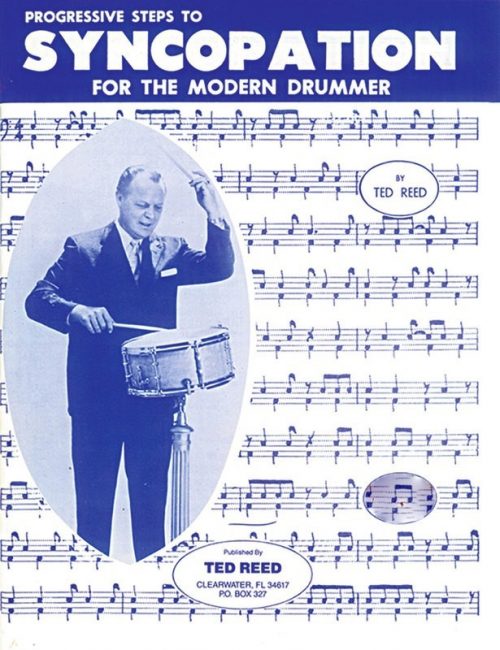 Voted second on Modern Drummer's list of 25 Greatest Drum Books in 1993, Progressive Steps to Syncopation for the Modern Drummer is one of the most versatile and practical works ever written for drums. Created exclusively to address syncopation, it has earned its place as a standard tool for teaching beginning drummers syncopation and strengthening reading skills. This book includes many accented eighths, dotted eighths and sixteenths, eighth-note triplets and sixteenth notes for extended solos. In addition, teachers can develop many of their own examples from it.
Voted second on Modern Drummer's list of 25 Greatest Drum Books in 1993, Progressive Steps to Syncopation for the Modern Drummer is one of the most versatile and practical works ever written for drums. Created exclusively to address syncopation, it has earned its place as a standard tool for teaching beginning drummers syncopation and strengthening reading skills. This book includes many accented eighths, dotted eighths and sixteenths, eighth-note triplets and sixteenth notes for extended solos. In addition, teachers can develop many of their own examples from it. -
Sale!- Out Of Stock -
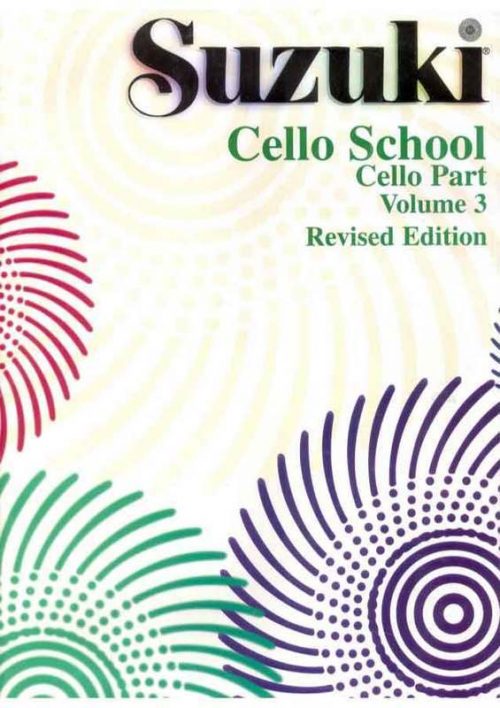 Teach Cello with the popular Suzuki Cello School. The Suzuki Method of Talent Education is based on Shinichi Suzuki's view that every child is born with ability, and that people are the product of their environment. According to Shinichi Suzuki, a world-renowned violinist and teacher, the greatest joy an adult can know comes from developing a child's potential so he/she can express all that is harmonious and best in human beings. Students are taught using the "mother-tongue" approach. Each series of books for a particular instrument in the Suzuki Method is considered a Suzuki music school, such as the Suzuki Cello School. Suzuki lessons are generally given in a private studio setting with additional group lessons. The student listens to the recordings and works with their Suzuki cello teacher to develop their potential as a musician and as a person. This Suzuki Book is integral for Suzuki cello lessons. Titles: Berceuse, Wiegenlied or Lullaby, Op. 98, No. 2 (F. Schubert) • Tonalization: The Moon over the Ruined Castle (Taki) • Gavotte (Lully) • Minuet from Sei Quintetti for Archi No. 11, Op. 11, No. 5 in E Major (Boccherini) • Tonalization: The Moon over the Ruined Castle (Taki) • Scherzo (Webster) • Minuet in G, Wo0 10, No. 7 for Piano (Beethoven) • Gavotte in C Minor, Gavotte en Rondeau from Suite in G Minor for Klavier, BWV 822 (Bach) • Minuet No. 3, BWV Anh. II 114/Anh. III 183/Anh. II, 115 (Bach) • Humoresque, Op. 101, No. 7 for Piano (Dvorák) • La Cinquantaine (Gabriel-Marie) • Allegro Moderato from Sonata I in G, BWV 1027 for Viola da Gamba (Bach). For a complete list of the most recent printings by AMPV number, go to alfred.com/suzuki. This title is available in SmartMusic. The International editions include an updated title page that designates the book as the International Edition. A Federation Festivals 2020-2024 selection.
Teach Cello with the popular Suzuki Cello School. The Suzuki Method of Talent Education is based on Shinichi Suzuki's view that every child is born with ability, and that people are the product of their environment. According to Shinichi Suzuki, a world-renowned violinist and teacher, the greatest joy an adult can know comes from developing a child's potential so he/she can express all that is harmonious and best in human beings. Students are taught using the "mother-tongue" approach. Each series of books for a particular instrument in the Suzuki Method is considered a Suzuki music school, such as the Suzuki Cello School. Suzuki lessons are generally given in a private studio setting with additional group lessons. The student listens to the recordings and works with their Suzuki cello teacher to develop their potential as a musician and as a person. This Suzuki Book is integral for Suzuki cello lessons. Titles: Berceuse, Wiegenlied or Lullaby, Op. 98, No. 2 (F. Schubert) • Tonalization: The Moon over the Ruined Castle (Taki) • Gavotte (Lully) • Minuet from Sei Quintetti for Archi No. 11, Op. 11, No. 5 in E Major (Boccherini) • Tonalization: The Moon over the Ruined Castle (Taki) • Scherzo (Webster) • Minuet in G, Wo0 10, No. 7 for Piano (Beethoven) • Gavotte in C Minor, Gavotte en Rondeau from Suite in G Minor for Klavier, BWV 822 (Bach) • Minuet No. 3, BWV Anh. II 114/Anh. III 183/Anh. II, 115 (Bach) • Humoresque, Op. 101, No. 7 for Piano (Dvorák) • La Cinquantaine (Gabriel-Marie) • Allegro Moderato from Sonata I in G, BWV 1027 for Viola da Gamba (Bach). For a complete list of the most recent printings by AMPV number, go to alfred.com/suzuki. This title is available in SmartMusic. The International editions include an updated title page that designates the book as the International Edition. A Federation Festivals 2020-2024 selection. -
Sale!- Out Of Stock -
 Teach cello with the popular Suzuki Cello School. The Suzuki Method of Talent Education is based on Shinichi Suzuki's view that every child is born with ability, and that people are the product of their environment. According to Shinichi Suzuki, a world-renowned violinist and teacher, the greatest joy an adult can know comes from developing a child's potential so he/she can express all that is harmonious and best in human beings. Students are taught using the "mother-tongue" approach. Each series of books for a particular instrument in the Suzuki Method is considered a Suzuki music school, such as the Suzuki Cello School. Suzuki lessons are generally given in a private studio setting with additional group lessons. The student listens to the recordings and works with their Suzuki cello teacher to develop their potential as a musician and as a person. This Suzuki Book is integral for Suzuki cello lessons. Titles: Long, Long Ago (T. H. Bayly) • May Time, Komm Lieber Mai (Longing for Spring) from Sehnsucht nach dem Fruhlinge, K. 96 (W. A. Mozart) • Minuet No. 1, Minuett III from Suite in G Minor for Klavier, BWV 822 (J. S. Bach) • Minuet No. 3, Minuet in C, BWV Anh. II (J. S. Bach) • Chorus from Judas Maccabaeus (G. F. Handel) • Hunters' Chorus from 3rd Act of the Opera Der Freischutz (C. M. von Weber) • Musette in G, Gavotte II or the Musette from English Suite III in G Minor for Klavier, BWV 808 (J. S. Bach) • March in G (J. S. Bach) • Theme from Witches' Dance (N. Paganini) • Tonalization: The Moon over the Ruined Castle (R. Taki) • The Two Grenadiers, Die Beiden Grenadier, Op. 49, No. 1 for Voice and Piano (R. Schumann) • Gavotte (F. J. Gossec) • Bourree from Sonata in F Major for Oboe and Basso Continuo, HHA IV/18, No. 8-EZ (G. F. Handel). This title is available in SmartMusic. For a complete list of the most recent printings by AMPV number, go to alfred.com/suzuki. The International editions include an updated title page that designates the book as the International Edition. A Federation Festivals 2020-2024 selection.
Teach cello with the popular Suzuki Cello School. The Suzuki Method of Talent Education is based on Shinichi Suzuki's view that every child is born with ability, and that people are the product of their environment. According to Shinichi Suzuki, a world-renowned violinist and teacher, the greatest joy an adult can know comes from developing a child's potential so he/she can express all that is harmonious and best in human beings. Students are taught using the "mother-tongue" approach. Each series of books for a particular instrument in the Suzuki Method is considered a Suzuki music school, such as the Suzuki Cello School. Suzuki lessons are generally given in a private studio setting with additional group lessons. The student listens to the recordings and works with their Suzuki cello teacher to develop their potential as a musician and as a person. This Suzuki Book is integral for Suzuki cello lessons. Titles: Long, Long Ago (T. H. Bayly) • May Time, Komm Lieber Mai (Longing for Spring) from Sehnsucht nach dem Fruhlinge, K. 96 (W. A. Mozart) • Minuet No. 1, Minuett III from Suite in G Minor for Klavier, BWV 822 (J. S. Bach) • Minuet No. 3, Minuet in C, BWV Anh. II (J. S. Bach) • Chorus from Judas Maccabaeus (G. F. Handel) • Hunters' Chorus from 3rd Act of the Opera Der Freischutz (C. M. von Weber) • Musette in G, Gavotte II or the Musette from English Suite III in G Minor for Klavier, BWV 808 (J. S. Bach) • March in G (J. S. Bach) • Theme from Witches' Dance (N. Paganini) • Tonalization: The Moon over the Ruined Castle (R. Taki) • The Two Grenadiers, Die Beiden Grenadier, Op. 49, No. 1 for Voice and Piano (R. Schumann) • Gavotte (F. J. Gossec) • Bourree from Sonata in F Major for Oboe and Basso Continuo, HHA IV/18, No. 8-EZ (G. F. Handel). This title is available in SmartMusic. For a complete list of the most recent printings by AMPV number, go to alfred.com/suzuki. The International editions include an updated title page that designates the book as the International Edition. A Federation Festivals 2020-2024 selection. -
Sale!- Out Of Stock -
 Teach Cello with the popular Suzuki Cello School. The Suzuki Method of Talent Education is based on Shinichi Suzuki's view that every child is born with ability, and that people are the product of their environment. According to Shinichi Suzuki, a world-renowned violinist and teacher, the greatest joy an adult can know comes from developing a child's potential so he/she can express all that is harmonious and best in human beings. Students are taught using the "mother-tongue" approach. Each series of books for a particular instrument in the Suzuki Method is considered a Suzuki music school, such as the Suzuki Cello School. Suzuki lessons are generally given in a private studio setting with additional group lessons. The student listens to the recordings and works with their Suzuki cello teacher to develop their potential as a musician and as a person.This Suzuki Book is integral for Suzuki cello lessons. Titles: Twinkle, Twinkle, Little Star Variations (Suzuki) • French Folk Song (Folk Song) • Lightly Row (Folk Song) • Song of the Wind (Folk Song) • Go Tell Aunt Rhody (Folk Song) • O Come, Little Children (Folk Song) • May Song (Folk Song) • Allegro (Suzuki) • Perpetual Motion in D Major (Suzuki) • Perpetual Motion in G Major (Suzuki) • Long, Long Ago (Bayly) • Allegretto (Suzuki) • Andantino (Suzuki) • Rigadoon (Purcell) • Etude (Suzuki) • The Happy Farmer from Album for the Young, Op. 68, No. 10 (Schumann) • Minuet in C, No. 11 in G Major from Notebook for Anna Magdalena Bach, BWV 841 (Bach) • Minuet No. 2 from Minuet in G Major, BWV 116 (Bach). For a complete list of the most recent printings by AMPV number, go to alfred.com/suzuki. This title is available in SmartMusic. The International editions include an updated title page that designates the book as the International Edition. A Federation Festivals 2020-2024 selection.
Teach Cello with the popular Suzuki Cello School. The Suzuki Method of Talent Education is based on Shinichi Suzuki's view that every child is born with ability, and that people are the product of their environment. According to Shinichi Suzuki, a world-renowned violinist and teacher, the greatest joy an adult can know comes from developing a child's potential so he/she can express all that is harmonious and best in human beings. Students are taught using the "mother-tongue" approach. Each series of books for a particular instrument in the Suzuki Method is considered a Suzuki music school, such as the Suzuki Cello School. Suzuki lessons are generally given in a private studio setting with additional group lessons. The student listens to the recordings and works with their Suzuki cello teacher to develop their potential as a musician and as a person.This Suzuki Book is integral for Suzuki cello lessons. Titles: Twinkle, Twinkle, Little Star Variations (Suzuki) • French Folk Song (Folk Song) • Lightly Row (Folk Song) • Song of the Wind (Folk Song) • Go Tell Aunt Rhody (Folk Song) • O Come, Little Children (Folk Song) • May Song (Folk Song) • Allegro (Suzuki) • Perpetual Motion in D Major (Suzuki) • Perpetual Motion in G Major (Suzuki) • Long, Long Ago (Bayly) • Allegretto (Suzuki) • Andantino (Suzuki) • Rigadoon (Purcell) • Etude (Suzuki) • The Happy Farmer from Album for the Young, Op. 68, No. 10 (Schumann) • Minuet in C, No. 11 in G Major from Notebook for Anna Magdalena Bach, BWV 841 (Bach) • Minuet No. 2 from Minuet in G Major, BWV 116 (Bach). For a complete list of the most recent printings by AMPV number, go to alfred.com/suzuki. This title is available in SmartMusic. The International editions include an updated title page that designates the book as the International Edition. A Federation Festivals 2020-2024 selection. -
Sale!- Out Of Stock -
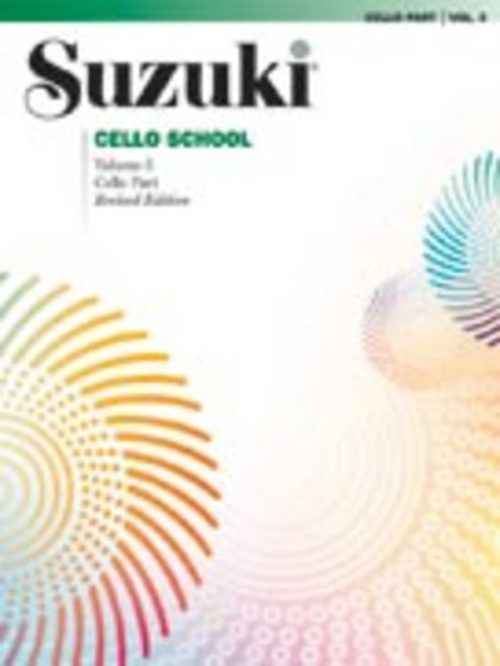 Teach cello with the popular Suzuki Cello School. The Suzuki Method of Talent Education is based on Shinichi Suzuki's view that every child is born with ability, and that people are the product of their environment. According to Shinichi Suzuki, a world-renowned violinist and teacher, the greatest joy an adult can know comes from developing a child's potential so he/she can express all that is harmonious and best in human beings. Students are taught using the "mother-tongue" approach. Each series of books for a particular instrument in the Suzuki Method is considered a Suzuki music school, such as the Suzuki Cello School. Suzuki lessons are generally given in a private studio setting with additional group lessons. The student listens to the recordings and works with their Suzuki cello teacher to develop their potential as a musician and as a person. This Suzuki book for Volume 4 is integral for Suzuki cello lessons. Titles: Sonata in E Minor, Op. 14, No. 5 (Largo, Allegro, Largo, Allegro) (Vivaldi) • Danse Rustique, Op. 20, No. 5 (Squire) • Arioso from Cantata 156 (Bach) • Rondo from Concerto No. 4, Op. 65 (Goltermann). For a complete list of the most recent printings by AMPV number, go to alfred.com/suzuki. This title is available in SmartMusic. The International editions include an updated title page that designates the book as the International Edition. A Federation Festivals 2020-2024 selection.
Teach cello with the popular Suzuki Cello School. The Suzuki Method of Talent Education is based on Shinichi Suzuki's view that every child is born with ability, and that people are the product of their environment. According to Shinichi Suzuki, a world-renowned violinist and teacher, the greatest joy an adult can know comes from developing a child's potential so he/she can express all that is harmonious and best in human beings. Students are taught using the "mother-tongue" approach. Each series of books for a particular instrument in the Suzuki Method is considered a Suzuki music school, such as the Suzuki Cello School. Suzuki lessons are generally given in a private studio setting with additional group lessons. The student listens to the recordings and works with their Suzuki cello teacher to develop their potential as a musician and as a person. This Suzuki book for Volume 4 is integral for Suzuki cello lessons. Titles: Sonata in E Minor, Op. 14, No. 5 (Largo, Allegro, Largo, Allegro) (Vivaldi) • Danse Rustique, Op. 20, No. 5 (Squire) • Arioso from Cantata 156 (Bach) • Rondo from Concerto No. 4, Op. 65 (Goltermann). For a complete list of the most recent printings by AMPV number, go to alfred.com/suzuki. This title is available in SmartMusic. The International editions include an updated title page that designates the book as the International Edition. A Federation Festivals 2020-2024 selection. -
Sale!- Out Of Stock -
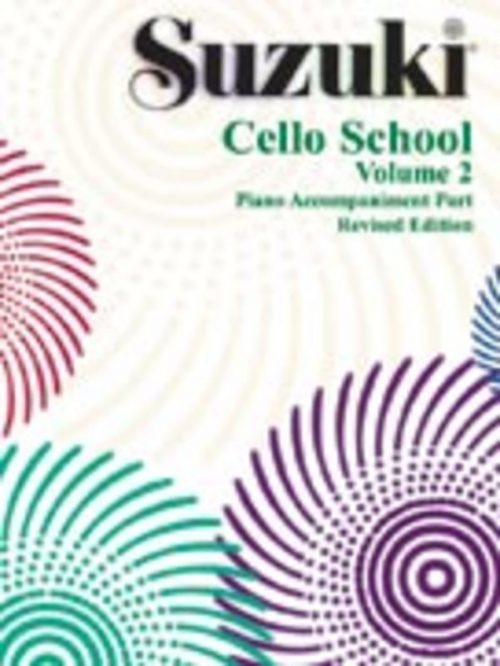 Teach cello with the popular Suzuki Cello School. The Suzuki Method of Talent Education is based on Shinichi Suzuki's view that every child is born with ability, and that people are the product of their environment. According to Shinichi Suzuki, a world-renowned violinist and teacher, the greatest joy an adult can know comes from developing a child's potential so he/she can express all that is harmonious and best in human beings. Students are taught using the "mother-tongue" approach. Each series of books for a particular instrument in the Suzuki Method is considered a Suzuki music school, such as the Suzuki Cello School. Suzuki lessons are generally given in a private studio setting with additional group lessons. The student listens to the recordings and works with their Suzuki cello teacher to develop their potential as a musician and as a person. This Suzuki Book is integral for Suzuki cello lessons. Titles: Sonata in C Major, Op. 40, No. 1 (Allegro, Rondo grazioso) (Breval) • Adagio and Allegro from the Sonata in E Minor, Op. 1, No. 2 (Marcello) • Minuets from the Suite in G Major, BWV 1007 (Bach) • Tonalization • Chanson Triste, Op. 40, No. 2 for Piano (Tchaikovsky). For a complete list of the most recent printings by AMPV number, go to alfred.com/suzuki. This title is available in SmartMusic. The International editions include an updated title page that designates the book as the International Edition. A Federation Festivals 2020-2024 selection.
Teach cello with the popular Suzuki Cello School. The Suzuki Method of Talent Education is based on Shinichi Suzuki's view that every child is born with ability, and that people are the product of their environment. According to Shinichi Suzuki, a world-renowned violinist and teacher, the greatest joy an adult can know comes from developing a child's potential so he/she can express all that is harmonious and best in human beings. Students are taught using the "mother-tongue" approach. Each series of books for a particular instrument in the Suzuki Method is considered a Suzuki music school, such as the Suzuki Cello School. Suzuki lessons are generally given in a private studio setting with additional group lessons. The student listens to the recordings and works with their Suzuki cello teacher to develop their potential as a musician and as a person. This Suzuki Book is integral for Suzuki cello lessons. Titles: Sonata in C Major, Op. 40, No. 1 (Allegro, Rondo grazioso) (Breval) • Adagio and Allegro from the Sonata in E Minor, Op. 1, No. 2 (Marcello) • Minuets from the Suite in G Major, BWV 1007 (Bach) • Tonalization • Chanson Triste, Op. 40, No. 2 for Piano (Tchaikovsky). For a complete list of the most recent printings by AMPV number, go to alfred.com/suzuki. This title is available in SmartMusic. The International editions include an updated title page that designates the book as the International Edition. A Federation Festivals 2020-2024 selection. -
Sale!- Out Of Stock -
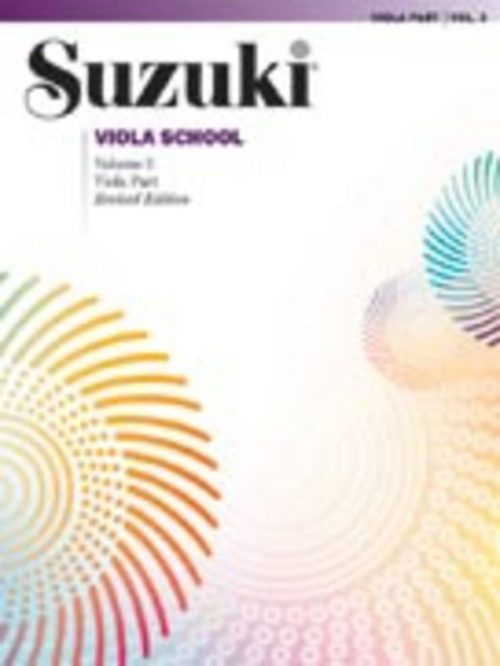 Teach viola with the popular Suzuki Viola School. The Suzuki Method of Talent Education is based on Shinichi Suzuki's view that every child is born with ability, and that people are the product of their environment. According to Shinichi Suzuki, a world-renowned violinist and teacher, the greatest joy an adult can know comes from developing a child's potential so he/she can express all that is harmonious and best in human beings. Students are taught using the "mother-tongue" approach. Each series of books for a particular instrument in the Suzuki Method is considered a Suzuki music school, such as the Suzuki Viola School. Suzuki lessons are generally given in a private studio setting with additional group lessons. The student listens to the recordings and works with their Suzuki viola teacher to develop their potential as a musician and as a person. This Suzuki book, Volume 2, is integral for Suzuki viola lessons. Titles: Study Points • Gavotte (Martini) • Minuet (Bach) • Gavotte in G Minor (Bach) • Humoresque (Dvorák) • Gavotte (Becker) • Gavotte in D Major (Bach) • Bourree (Bach). For a complete list of the most recent printings by AMPV number, go to alfred.com/suzuki. This title is available in SmartMusic. The International editions include an updated title page that designates the book as the International Edition. A Federation Festivals 2020-2024 selection.
Teach viola with the popular Suzuki Viola School. The Suzuki Method of Talent Education is based on Shinichi Suzuki's view that every child is born with ability, and that people are the product of their environment. According to Shinichi Suzuki, a world-renowned violinist and teacher, the greatest joy an adult can know comes from developing a child's potential so he/she can express all that is harmonious and best in human beings. Students are taught using the "mother-tongue" approach. Each series of books for a particular instrument in the Suzuki Method is considered a Suzuki music school, such as the Suzuki Viola School. Suzuki lessons are generally given in a private studio setting with additional group lessons. The student listens to the recordings and works with their Suzuki viola teacher to develop their potential as a musician and as a person. This Suzuki book, Volume 2, is integral for Suzuki viola lessons. Titles: Study Points • Gavotte (Martini) • Minuet (Bach) • Gavotte in G Minor (Bach) • Humoresque (Dvorák) • Gavotte (Becker) • Gavotte in D Major (Bach) • Bourree (Bach). For a complete list of the most recent printings by AMPV number, go to alfred.com/suzuki. This title is available in SmartMusic. The International editions include an updated title page that designates the book as the International Edition. A Federation Festivals 2020-2024 selection. -
Sale!- Out Of Stock -
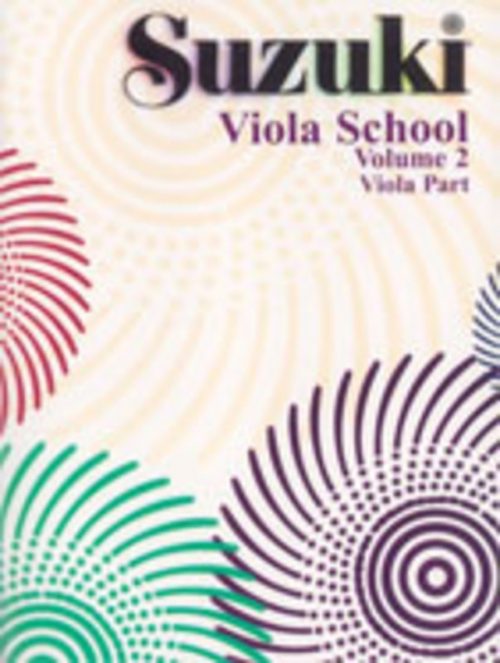 Teach viola with the popular Suzuki Viola School. The Suzuki Method of Talent Education is based on Shinichi Suzuki's view that every child is born with ability, and that people are the product of their environment. According to Shinichi Suzuki, a world-renowned violinist and teacher, the greatest joy an adult can know comes from developing a child's potential so he/she can express all that is harmonious and best in human beings. Students are taught using the "mother-tongue" approach. Each series of books for a particular instrument in the Suzuki Method is considered a Suzuki music school, such as the Suzuki Viola School. Suzuki lessons are generally given in a private studio setting with additional group lessons. The student listens to the recordings and works with their Suzuki Viola teacher to develop their potential as a musician and as a person. This Suzuki book, Volume 2, is integral for Suzuki viola lessons. Titles: Chorus from Judas Maccabaeus (Handel) • Musette, Gavotte II or the Musette from English Suite III in G Minor for Klavier, BWV 808 (Bach) • Hunters' Chorus from 3rd Act of the Opera Der Freischutz (Weber) • Long, Long Ago (Bayly) • Waltz, Op. 39, No. 15 for Piano (Brahms) • Bourree from Sonata in F Major for Oboe, HHA IV/18, No. 8 (Handel) • The Two Grenadiers, Die beiden Grenadier, Op. 49, No. 1 for Voice and Piano (Schumann) • Theme from Witches' Dance (Paganini) • Gavotte from Mignon (Thomas) • Gavotte (Lully) • Minuet in G, Wo0 10, No. 2 (Beethoven) • Minuet from Sei Quintetti per Archi No. 11, Op. 11, No. 5 in E Major (Boccherini). For a complete list of the most recent printings by AMPV number, go to alfred.com/suzuki. This title is available in SmartMusic. A Federation Festivals 2020-2024 selection.
Teach viola with the popular Suzuki Viola School. The Suzuki Method of Talent Education is based on Shinichi Suzuki's view that every child is born with ability, and that people are the product of their environment. According to Shinichi Suzuki, a world-renowned violinist and teacher, the greatest joy an adult can know comes from developing a child's potential so he/she can express all that is harmonious and best in human beings. Students are taught using the "mother-tongue" approach. Each series of books for a particular instrument in the Suzuki Method is considered a Suzuki music school, such as the Suzuki Viola School. Suzuki lessons are generally given in a private studio setting with additional group lessons. The student listens to the recordings and works with their Suzuki Viola teacher to develop their potential as a musician and as a person. This Suzuki book, Volume 2, is integral for Suzuki viola lessons. Titles: Chorus from Judas Maccabaeus (Handel) • Musette, Gavotte II or the Musette from English Suite III in G Minor for Klavier, BWV 808 (Bach) • Hunters' Chorus from 3rd Act of the Opera Der Freischutz (Weber) • Long, Long Ago (Bayly) • Waltz, Op. 39, No. 15 for Piano (Brahms) • Bourree from Sonata in F Major for Oboe, HHA IV/18, No. 8 (Handel) • The Two Grenadiers, Die beiden Grenadier, Op. 49, No. 1 for Voice and Piano (Schumann) • Theme from Witches' Dance (Paganini) • Gavotte from Mignon (Thomas) • Gavotte (Lully) • Minuet in G, Wo0 10, No. 2 (Beethoven) • Minuet from Sei Quintetti per Archi No. 11, Op. 11, No. 5 in E Major (Boccherini). For a complete list of the most recent printings by AMPV number, go to alfred.com/suzuki. This title is available in SmartMusic. A Federation Festivals 2020-2024 selection. -
Sale!- Out Of Stock -
 Teach viola with the popular Suzuki Viola School. The Suzuki Method of Talent Education is based on Shinichi Suzuki's view that every child is born with ability, and that people are the product of their environment. According to Shinichi Suzuki, a world-renowned violinist and teacher, the greatest joy an adult can know comes from developing a child's potential so he/she can express all that is harmonious and best in human beings. Students are taught using the "mother-tongue" approach. Each series of books for a particular instrument in the Suzuki Method is considered a Suzuki music school, such as the Suzuki Viola School. Suzuki lessons are generally given in a private studio setting with additional group lessons. The student listens to the recordings and works with their Suzuki viola teacher to develop their potential as a musician and as a person. This Suzuki book is integral for Suzuki viola lessons. Titles: Twinkle, Twinkle, Little Star Variations (Suzuki) • Lightly Row (Folk Song) • Song of the Wind (Folk Song) • Go Tell Aunt Rhody (Folk Song) • O Come, Little Children (Folk Song) • May Song (Folk Song) • Long, Long Ago (Bayly) • Allegro (Suzuki) • Perpetual Motion (Suzuki) • Allegretto (Suzuki) • Andantino (Suzuki) • Etude (Suzuki) • Minuet 1, Minuett III from Suite in G Minor for Klavier, BWV 822 (Bach) • Minuet 2, Minuet, BWV Anh. II 116 from Notebook for Anna Magdalena Bach (Bach) • Minuet 3, Minuet BWV Anh. II 114/Anh. III 183 Bach) • The Happy Farmer from Album for the Young, Op. 68, No. 10 (Schumann) • Gavotte (Gossec). For a complete list of the most recent printings by AMPV number, go to alfred.com/suzuki. This title is available in SmartMusic. A Federation Festivals 2020-2024 selection.
Teach viola with the popular Suzuki Viola School. The Suzuki Method of Talent Education is based on Shinichi Suzuki's view that every child is born with ability, and that people are the product of their environment. According to Shinichi Suzuki, a world-renowned violinist and teacher, the greatest joy an adult can know comes from developing a child's potential so he/she can express all that is harmonious and best in human beings. Students are taught using the "mother-tongue" approach. Each series of books for a particular instrument in the Suzuki Method is considered a Suzuki music school, such as the Suzuki Viola School. Suzuki lessons are generally given in a private studio setting with additional group lessons. The student listens to the recordings and works with their Suzuki viola teacher to develop their potential as a musician and as a person. This Suzuki book is integral for Suzuki viola lessons. Titles: Twinkle, Twinkle, Little Star Variations (Suzuki) • Lightly Row (Folk Song) • Song of the Wind (Folk Song) • Go Tell Aunt Rhody (Folk Song) • O Come, Little Children (Folk Song) • May Song (Folk Song) • Long, Long Ago (Bayly) • Allegro (Suzuki) • Perpetual Motion (Suzuki) • Allegretto (Suzuki) • Andantino (Suzuki) • Etude (Suzuki) • Minuet 1, Minuett III from Suite in G Minor for Klavier, BWV 822 (Bach) • Minuet 2, Minuet, BWV Anh. II 116 from Notebook for Anna Magdalena Bach (Bach) • Minuet 3, Minuet BWV Anh. II 114/Anh. III 183 Bach) • The Happy Farmer from Album for the Young, Op. 68, No. 10 (Schumann) • Gavotte (Gossec). For a complete list of the most recent printings by AMPV number, go to alfred.com/suzuki. This title is available in SmartMusic. A Federation Festivals 2020-2024 selection. -
Sale!- Out Of Stock -
 Teach violin with the popular Suzuki Violin School. The Suzuki Method of Talent Education is based on Shinichi Suzuki's view that every child is born with ability, and that people are the product of their environment. According to Shinichi Suzuki, a world-renowned violinist and teacher, the greatest joy an adult can know comes from developing a child's potential so he/she can express all that is harmonious and best in human beings. Students are taught using the "mother-tongue" approach. Each series of books for a particular instrument in the Suzuki Method is considered a Suzuki music school, such as the Suzuki Violin School. Suzuki lessons are generally given in a private studio setting with additional group lessons. The student listens to the recordings and works with their Suzuki violin teacher to develop their potential as a musician and as a person. This Suzuki book is integral for Suzuki Violin Lessons. This revised edition of the Suzuki Violin School, Volume 4 features: • Revised editing of pieces, including bowings and fingerings • Additional exercises, some from Shinichi Suzuki, plus additional insight and suggestions for teachers • Text in English, French, German, and Spanish • Musical notation guide • Fingerboard position. Titles: Lullaby (Tonalization) (Schubert) • Lullaby (Tonalization) (Brahms) • Concerto No. 2 in G Major, Op. 13, 3rd Movement (Seitz) • Concerto No. 5 in D Major, Op. 22, 1st Movement (Seitz) • Concerto No. 5 in D Major, Op. 22, 3rd Movement (Seitz) • Concerto in A Minor, 1st Movement, Op. 3, No. 6 (Vivaldi/Nachez) • Concerto in A Minor, 3rd Movement, Op. 3, No. 6 (Vivaldi/Nachez) • Perpetual Motion, "Little Suite No. 6" (Bohm) • Concerto for Two Violins in D Minor, BWV 1043, 1st Movement, Violin II (Bach). For a complete list of the most recent printings by AMPV number, go to alfred.com/suzuki. This title is available in SmartMusic. The International editions include an updated title page that designates the book as the International Edition. A Federation Festivals 2020-2024 selection.
Teach violin with the popular Suzuki Violin School. The Suzuki Method of Talent Education is based on Shinichi Suzuki's view that every child is born with ability, and that people are the product of their environment. According to Shinichi Suzuki, a world-renowned violinist and teacher, the greatest joy an adult can know comes from developing a child's potential so he/she can express all that is harmonious and best in human beings. Students are taught using the "mother-tongue" approach. Each series of books for a particular instrument in the Suzuki Method is considered a Suzuki music school, such as the Suzuki Violin School. Suzuki lessons are generally given in a private studio setting with additional group lessons. The student listens to the recordings and works with their Suzuki violin teacher to develop their potential as a musician and as a person. This Suzuki book is integral for Suzuki Violin Lessons. This revised edition of the Suzuki Violin School, Volume 4 features: • Revised editing of pieces, including bowings and fingerings • Additional exercises, some from Shinichi Suzuki, plus additional insight and suggestions for teachers • Text in English, French, German, and Spanish • Musical notation guide • Fingerboard position. Titles: Lullaby (Tonalization) (Schubert) • Lullaby (Tonalization) (Brahms) • Concerto No. 2 in G Major, Op. 13, 3rd Movement (Seitz) • Concerto No. 5 in D Major, Op. 22, 1st Movement (Seitz) • Concerto No. 5 in D Major, Op. 22, 3rd Movement (Seitz) • Concerto in A Minor, 1st Movement, Op. 3, No. 6 (Vivaldi/Nachez) • Concerto in A Minor, 3rd Movement, Op. 3, No. 6 (Vivaldi/Nachez) • Perpetual Motion, "Little Suite No. 6" (Bohm) • Concerto for Two Violins in D Minor, BWV 1043, 1st Movement, Violin II (Bach). For a complete list of the most recent printings by AMPV number, go to alfred.com/suzuki. This title is available in SmartMusic. The International editions include an updated title page that designates the book as the International Edition. A Federation Festivals 2020-2024 selection. -
Sale!- Out Of Stock -
 Teach violin with the popular Suzuki Violin School. The Suzuki Method of Talent Education is based on Shinichi Suzuki's view that every child is born with ability, and that people are the product of their environment. According to Shinichi Suzuki, a world-renowned violinist and teacher, the greatest joy an adult can know comes from developing a child's potential so he/she can express all that is harmonious and best in human beings. Students are taught using the "mother-tongue" approach. Each series of books for a particular instrument in the Suzuki Method is considered a Suzuki music school, such as the Suzuki Violin School. Suzuki lessons are generally given in a private studio setting with additional group lessons. The student listens to the recordings and works with their Suzuki violin teacher to develop their potential as a musician and as a person. This Suzuki Book is integral for Suzuki violin lessons. This revised edition of the Suzuki Violin School, Volume 2 features: • Revised editing of pieces, including bowings and fingerings • 16 additional pages • Additional exercises, some from Shinichi Suzuki, plus additional insight and suggestions for teachers • Text in English, French, German, and Spanish • Musical notation guide • Fingerboard position. Titles: Study Points for Volume 2 • Chorus from Judas Maccabaeus (Handel) • Musette, Gavotte II or the Musette from English Suite III in G Minor for Klavier, BWV 808 (Bach) • Hunters' Chorus from 3rd Act of the Opera Der Freischutz (Weber) • Long, Long Ago (Bayly) • Waltz, Op. 39, No. 15 for Piano (Brahms) • Bourree from Sonata in F Major for Oboe, HHA IV/18, No. 8 (Handel) • The Two Grenadiers, Die beiden Grenadier, Op. 49, No. 1 for Voice and Piano (Schumann) • Theme from Witches' Dance (Paganini) • Gavotte from Mignon (Thomas) • Gavotte (Lully) • Minuet in G, Wo0 10, No. 2 (Beethoven) • Minuet from Sei Quintetti per Archi No. 11, Op. 11, No. 5 in E Major (Boccherini). For a complete list of the most recent printings by AMPV number, go to alfred.com/suzuki. This title is available in SmartMusic. The International editions include an updated title page that designates the book as the International Edition. A Federation Festivals 2020-2024 selection.
Teach violin with the popular Suzuki Violin School. The Suzuki Method of Talent Education is based on Shinichi Suzuki's view that every child is born with ability, and that people are the product of their environment. According to Shinichi Suzuki, a world-renowned violinist and teacher, the greatest joy an adult can know comes from developing a child's potential so he/she can express all that is harmonious and best in human beings. Students are taught using the "mother-tongue" approach. Each series of books for a particular instrument in the Suzuki Method is considered a Suzuki music school, such as the Suzuki Violin School. Suzuki lessons are generally given in a private studio setting with additional group lessons. The student listens to the recordings and works with their Suzuki violin teacher to develop their potential as a musician and as a person. This Suzuki Book is integral for Suzuki violin lessons. This revised edition of the Suzuki Violin School, Volume 2 features: • Revised editing of pieces, including bowings and fingerings • 16 additional pages • Additional exercises, some from Shinichi Suzuki, plus additional insight and suggestions for teachers • Text in English, French, German, and Spanish • Musical notation guide • Fingerboard position. Titles: Study Points for Volume 2 • Chorus from Judas Maccabaeus (Handel) • Musette, Gavotte II or the Musette from English Suite III in G Minor for Klavier, BWV 808 (Bach) • Hunters' Chorus from 3rd Act of the Opera Der Freischutz (Weber) • Long, Long Ago (Bayly) • Waltz, Op. 39, No. 15 for Piano (Brahms) • Bourree from Sonata in F Major for Oboe, HHA IV/18, No. 8 (Handel) • The Two Grenadiers, Die beiden Grenadier, Op. 49, No. 1 for Voice and Piano (Schumann) • Theme from Witches' Dance (Paganini) • Gavotte from Mignon (Thomas) • Gavotte (Lully) • Minuet in G, Wo0 10, No. 2 (Beethoven) • Minuet from Sei Quintetti per Archi No. 11, Op. 11, No. 5 in E Major (Boccherini). For a complete list of the most recent printings by AMPV number, go to alfred.com/suzuki. This title is available in SmartMusic. The International editions include an updated title page that designates the book as the International Edition. A Federation Festivals 2020-2024 selection. -
Sale!- Out Of Stock -
 Teach violin with the popular Suzuki Violin School. The Suzuki Method of Talent Education is based on Shinichi Suzuki's view that every child is born with ability, and that people are the product of their environment. According to Shinichi Suzuki, a world-renowned violinist and teacher, the greatest joy an adult can know comes from developing a child's potential so he/she can express all that is harmonious and best in human beings. Students are taught using the "mother-tongue" approach. Each series of books for a particular instrument in the Suzuki Method is considered a Suzuki music school, such as the Suzuki Violin School. Suzuki lessons are generally given in a private studio setting with additional group lessons. The student listens to the recordings and works with their Suzuki violin teacher to develop their potential as a musician and as a person. This Suzuki book is integral for Suzuki Violin lessons. This revised edition of the Suzuki Violin School, Volume 5 features: • Revised editing of pieces, including bowings and fingerings • Additional exercises, some from Shinichi Suzuki, plus additional insight and suggestions for teachers • Musical notation guide • Text in English, French, Spanish, and German • Fingerboard position. Titles: Gavotte (Bach) • Concerto in A Minor, 2nd Movement, Op. 3 No. 6 (Vivaldi) • Concerto in G Minor (Vivaldi) • Country Dance (Weber) • German Dance (Dittersdorf) • Gigue (Veracini) • Concerto for Two Violins in D Minor, BWV 1043, 1st Movement, Violin I (Bach). For a complete list of the most recent printings by AMPV number, go to alfred.com/suzuki. This title is available in SmartMusic. The International editions include an updated title page that designates the book as the International Edition. A Federation Festivals 2020-2024 selection.
Teach violin with the popular Suzuki Violin School. The Suzuki Method of Talent Education is based on Shinichi Suzuki's view that every child is born with ability, and that people are the product of their environment. According to Shinichi Suzuki, a world-renowned violinist and teacher, the greatest joy an adult can know comes from developing a child's potential so he/she can express all that is harmonious and best in human beings. Students are taught using the "mother-tongue" approach. Each series of books for a particular instrument in the Suzuki Method is considered a Suzuki music school, such as the Suzuki Violin School. Suzuki lessons are generally given in a private studio setting with additional group lessons. The student listens to the recordings and works with their Suzuki violin teacher to develop their potential as a musician and as a person. This Suzuki book is integral for Suzuki Violin lessons. This revised edition of the Suzuki Violin School, Volume 5 features: • Revised editing of pieces, including bowings and fingerings • Additional exercises, some from Shinichi Suzuki, plus additional insight and suggestions for teachers • Musical notation guide • Text in English, French, Spanish, and German • Fingerboard position. Titles: Gavotte (Bach) • Concerto in A Minor, 2nd Movement, Op. 3 No. 6 (Vivaldi) • Concerto in G Minor (Vivaldi) • Country Dance (Weber) • German Dance (Dittersdorf) • Gigue (Veracini) • Concerto for Two Violins in D Minor, BWV 1043, 1st Movement, Violin I (Bach). For a complete list of the most recent printings by AMPV number, go to alfred.com/suzuki. This title is available in SmartMusic. The International editions include an updated title page that designates the book as the International Edition. A Federation Festivals 2020-2024 selection. -
Sale!- Out Of Stock -
 This is the second book in a series which has been specifically developed to meet the needs of beginner string students aged 7-12. Contemporary, vibrant, creative, engaging and comprehensive each piece features a particular teaching point such as introducing a new note, a new skill or perhaps reinforcing previous elements within a new context. To assist both teacher and student the teaching point relevant to that piece then appears underneath its title.
This is the second book in a series which has been specifically developed to meet the needs of beginner string students aged 7-12. Contemporary, vibrant, creative, engaging and comprehensive each piece features a particular teaching point such as introducing a new note, a new skill or perhaps reinforcing previous elements within a new context. To assist both teacher and student the teaching point relevant to that piece then appears underneath its title. -
Sale!- Out Of Stock -
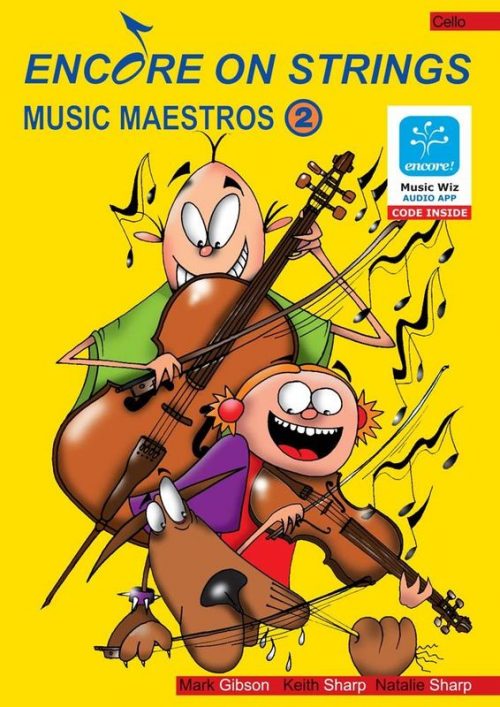 This is the second book in a series which has been specifically developed to meet the needs of beginner string students aged 7-12. Contemporary, vibrant, creative, engaging and comprehensive each piece features a particular teaching point such as introducing a new note, a new skill or perhaps reinforcing previous elements within a new context. To assist both teacher and student the teaching point relevant to that piece then appears underneath its title.
This is the second book in a series which has been specifically developed to meet the needs of beginner string students aged 7-12. Contemporary, vibrant, creative, engaging and comprehensive each piece features a particular teaching point such as introducing a new note, a new skill or perhaps reinforcing previous elements within a new context. To assist both teacher and student the teaching point relevant to that piece then appears underneath its title. -
Sale!- Out Of Stock -
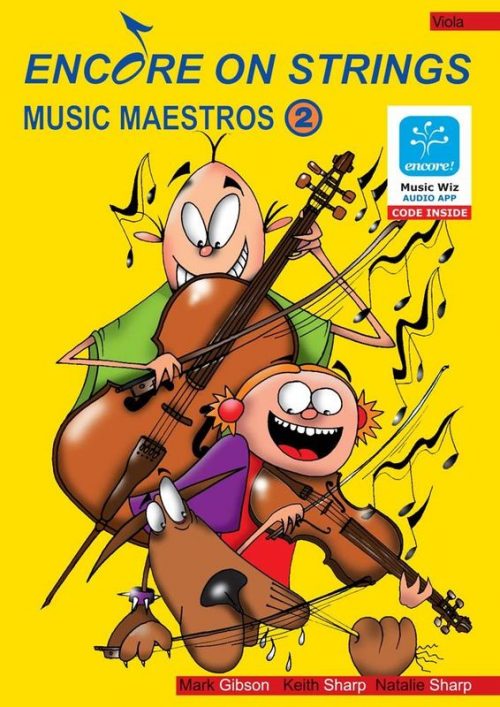 This is the second book in a series which has been specifically developed to meet the needs of beginner string students aged 7-12. Contemporary, vibrant, creative, engaging and comprehensive each piece features a particular teaching point such as introducing a new note, a new skill or perhaps reinforcing previous elements within a new context. To assist both teacher and student the teaching point relevant to that piece then appears underneath its title.
This is the second book in a series which has been specifically developed to meet the needs of beginner string students aged 7-12. Contemporary, vibrant, creative, engaging and comprehensive each piece features a particular teaching point such as introducing a new note, a new skill or perhaps reinforcing previous elements within a new context. To assist both teacher and student the teaching point relevant to that piece then appears underneath its title. -
Sale!- Out Of Stock -
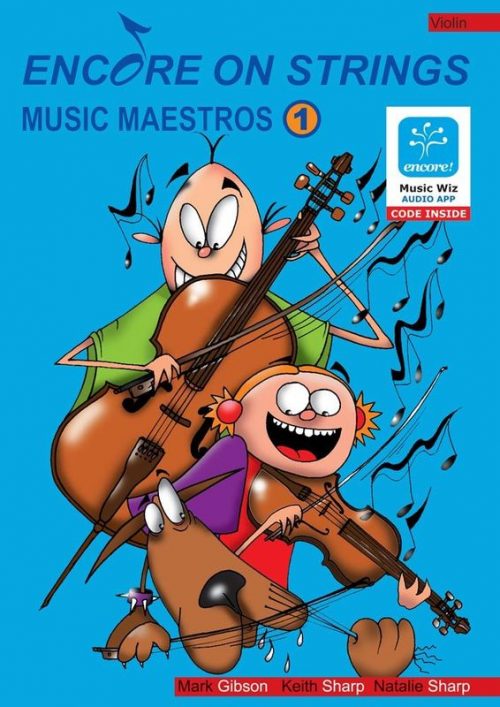 This is the first book in a series which has been specifically developed to meet the needs of beginner string students aged 7-12. Contemporary, vibrant, creative, engaging and comprehensive each piece features a particular teaching point such as introducing a new note, a new skill or perhaps reinforcing previous elements within a new context. To assist both teacher and student the teaching point relevant to thar and the student,rs underneath its title.
This is the first book in a series which has been specifically developed to meet the needs of beginner string students aged 7-12. Contemporary, vibrant, creative, engaging and comprehensive each piece features a particular teaching point such as introducing a new note, a new skill or perhaps reinforcing previous elements within a new context. To assist both teacher and student the teaching point relevant to thar and the student,rs underneath its title.




